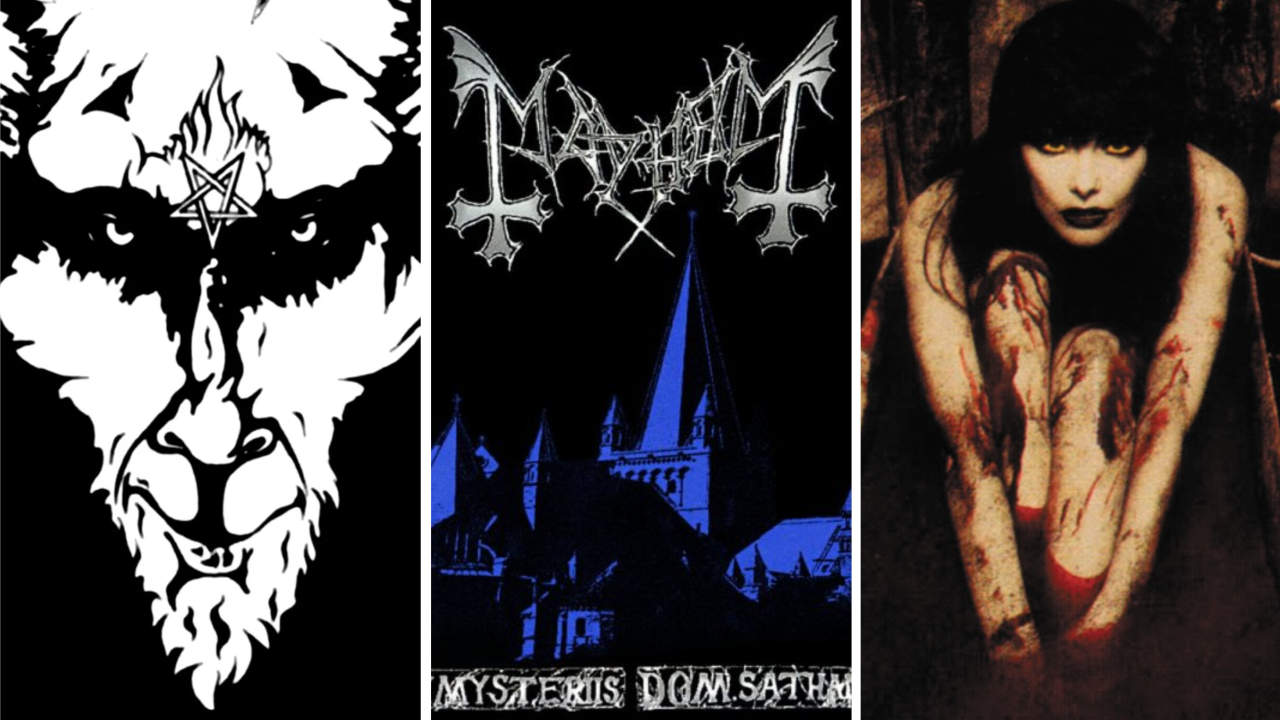Within the mainstream, the genius of black metal’s music is often lost amid a sea of sensationalism. "Its musicians are murderers, arsonists and satanists!", pop culture’s been crying since the 1990s. But, beyond the crimes of an extremist few, the subgenre’s consistently broadened what heavy music can get away with.
What started as a punk-ish rebellion against the New Wave Of British Heavy Metal is now the underground’s most malleable sound. There’s symphonic black metal, progressive black metal, blackgaze, viking metal, blackened death metal… and so little of it’s actually been made by the criminals the papers still focus on. So, here’s the full, 40-year history of black metal music, distilled into five essential albums.

Venom – Black Metal (1982)
Although the black metal manifesto was formalised by the “inner circle” of the 90s Oslo scene, it by no means invented it; 80s inspirations like Bathory and Venom are nowadays worshipped as the first wave of black metal. The latter iconoclasts had the strongest impact on the genre to come – and not just because it took its name from their raw-as-red-meat second album.
Black Metal scratched at the then-almighty NWOBHM. While Iron Maiden and Judas Priest counterattacked against punk using operatic melodies and intricate riffing, Venom embraced it to become obnoxious outcasts within their own movement. Outsiders loathed the album’s cheapskate production and unsubtle songs, and were terrified of its outright satanism. But then those tenets became the core values of Mayhem and early Emperor. When Black Metal’s lyrics called the genre “metal for maniacs pure”, Venom had no idea how right they were.
Mayhem – De Mysteriis Dom Sathanas (1994)
Mayhem’s debut is the scariest metal album of all time. Even without context, it’s a chilling listen, defined by its icy tremolo picking and screeching hymns to the dark side. But then you learn the backstory.
The band were the nucleus of Norwegian black metal. Guitarist Øystein “Euronymous” Aarseth defined its sound, vocalist Per “Dead” Ohlin invented its corpse-painted theatrics and one-time bassist Varg Vikernes instigated the church-burning extremism. Then Dead killed himself and Vikernes murdered Euronymous before outing himself as a far-right twat. Mayhem corralled their scene and it dispersed with their downfall.
On De Mysteriis…, Dead is replaced by Attila Csihar, and a killer and his victim hauntingly play on the same songs. It being released one year after Euronymous’s death makes it a sinister epitaph to one of the most destructive and notorious episodes in pop-cultural history – yet it remains a touchstone for everything else black metal would become.
Enslaved – Eld (1997)
After Euronymous died in 1993, the Norwegian black metal scene sonically splintered. Immortal built their lyrical landscape of Blashyrkh and delved deeper and deeper into old-school metal. Emperor grew in their symphonia and technicality. Ulver flourished into an industrial jazz post-rock thing, because why not? Meanwhile, Enslaved became the band Euronymous always wanted them to be.
Formed by Ivar Bjørnson and Grutle Kjellson when they were just teenagers, the band were proteges of the Oslo ringleader. They were even first exposed to progressive music in his record shop, Helvete. Such influence was apparent on 1994’s synthy metal debut Vikingligr Veldi, but Eld pushed even further. 16-minute opener 793 (Slaget Om Lindisfarne) is a classic of both the prog-black and viking metal styles, and was the strongest signal of the genre’s eclectic potential. Nowadays, Enslaved self-categorise as “all the favourites in your record collection in one cohesive mass”.
Cradle Of Filth – Cruelty And The Beast (1998)
Between Dusk And Her Embrace and Cruelty And The Beast, Dani Filth’s macabre cabaret courted the mainstream by generating as many headlines as Norwegian black metal, but killing 100% less people. Two fans were arrested for wearing that ‘Jesus Is A Cunt’ shirt in 1997 and '98, inspiring widespread scrutiny. Like Iron Maiden amidst the ‘satanic panic’, Cradle disgusted old fogeys and fascinated teenagers – the perfect combination for attention.
Cruelty… was always going to be a hit as a result, but what ensured the staying power was mixing the nascent and the timeless. Cradle tethered the fury and screams of black metal to the pageantry of Maiden and tales of historical horror. The band reached number 48 in the UK and number 13 in Finland, then their commercial ascent was sealed by From The Cradle To Enslave dominating MTV the following year.
Alcest – Écailles De Lune (2010)
Stéphane “Neige” Paut was just a kid with a dream. Literally. When he was young, the Alcest mastermind had repeated visions of a blissful landscape, which were so vivid that he believes they were flashes of a life before life. Neige’s MO for his band is to bring the sound of that personal paradise into reality.
The musician was also a child of the French black metal scene. Although he formed Alcest as a straight-ahead genre project, he united that aggression with heavenly beauty to create blackgaze. On breakthrough album Écailles De Lune, black metal sounded delicate, stocked with angelic croons and clean strumming as much as it was abrasive guitar tones and flurrying drums. The love that it received from mainstream critics pre-empted the kind of intrigue that would follow Deafheaven and Zeal & Ardor’s later genre experiments.





